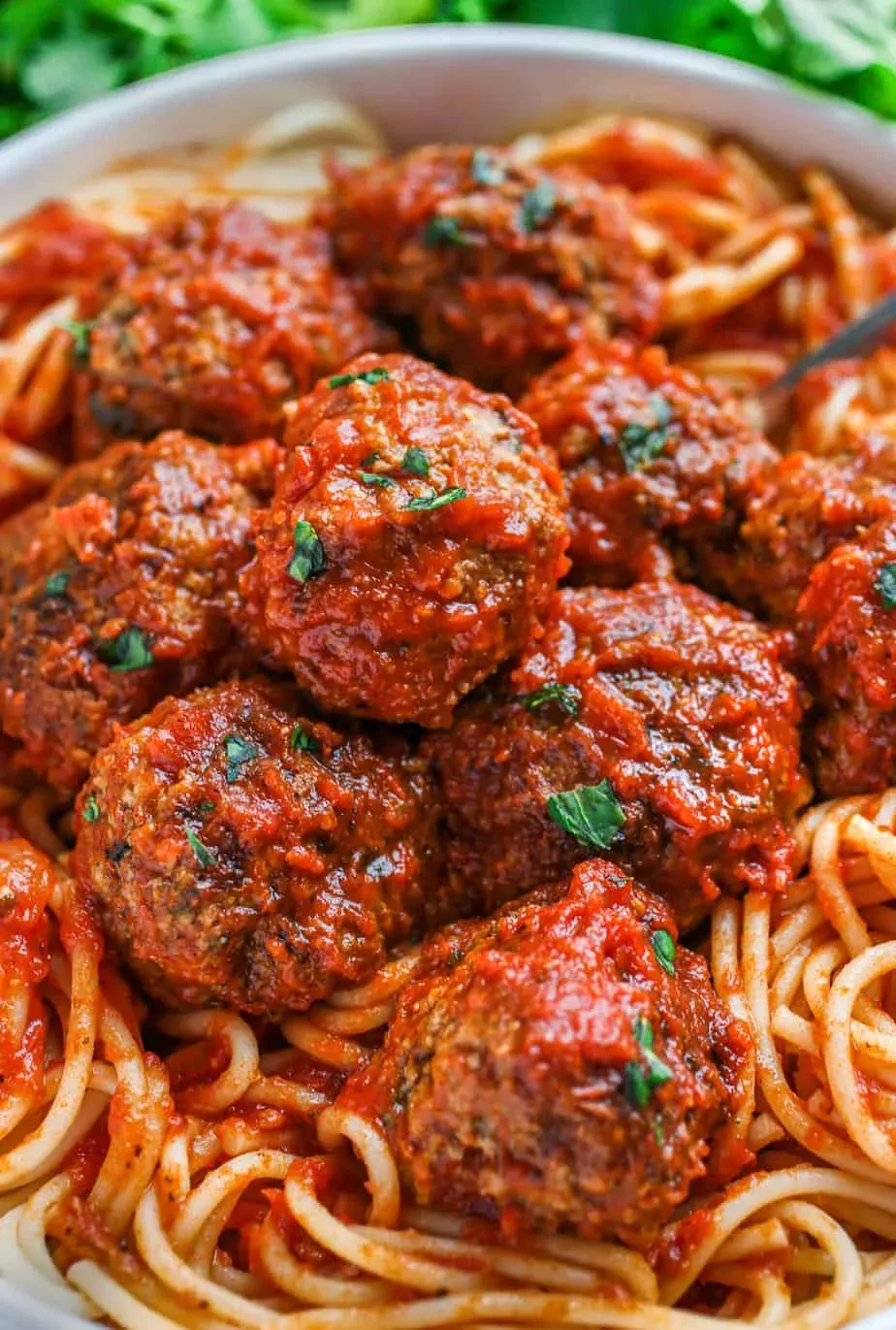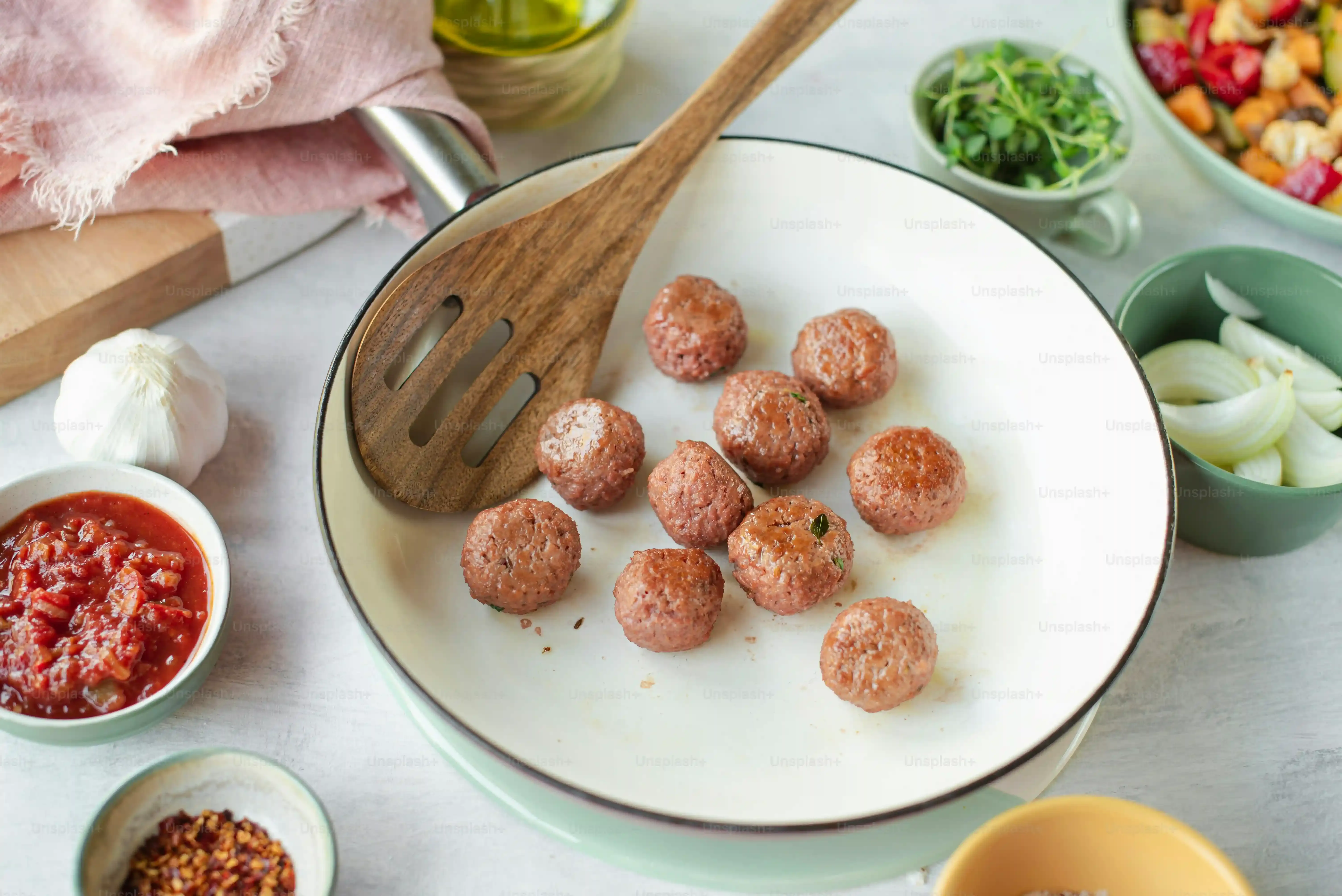Table of Contents
Let's be honest, finding the *truly* best Italian meatball recipe feels like a quest sometimes. You've likely tried a few, maybe ending up with something more akin to a bouncy ball than a tender, flavorful bite. It’s a common frustration. A great meatball should be juicy, packed with flavor, and melt in your mouth, not require a steak knife. Forget those dry, sad spheres you've endured. We’re diving deep into what makes a meatball truly exceptional, the kind your nonna would nod approvingly at. This isn't just another recipe; it's the blueprint for meatballs that deliver on their promise every single time. We'll break down the simple science, the essential ingredients, and walk you through the process step-by-step. Get ready to master what many consider the holy grail of comfort food and finally nail the best meatball recipes italian you've been searching for.
Why This is the Best Italian Meatball Recipe

Why This is the Best Italian Meatball Recipe
Beyond the Dry, Sad Meatball
Look, we've all been there. You spend time mixing, rolling, simmering, only to bite into a meatball that feels like you're chewing on a golf ball. It's disappointing, right? This recipe cuts through that frustration. It's not about some secret family ingredient passed down through generations (though those are nice too). It's about understanding a few fundamental principles that guarantee a juicy, tender result every single time. We're talking science, folks, simple kitchen science that prevents that dreaded dryness and ensures the meatballs hold their shape without turning into dense little rocks.
The Science of Tenderness and Flavor
What sets this recipe apart is the method and the specific blend of ingredients working together. It leverages what chefs call a "panade" – a mixture of breadcrumbs and liquid (like milk or water, sometimes egg) that gets added to the meat. This isn't just filler; it's a hydration powerhouse. The starch in the breadcrumbs absorbs liquid and traps it within the meat mixture as it cooks. This prevents the meat proteins from seizing up and squeezing out all their precious juices, which is the primary culprit behind dry meatballs. It’s a simple trick, but it makes a world of difference in achieving the best meatball recipes italian.
Key Elements for Tender Meatballs
- Using a panade (breadcrumb and liquid mix)
- Not overmixing the meat
- Choosing the right fat content in the meat
- Proper cooking technique (broiling then simmering)
Flavor That Sings, Texture That Yields
Beyond the tenderness, the flavor profile here is spot on. It's a classic combination – fresh herbs, garlic, Pecorino or Parmesan cheese, and that crucial blend of ground meats. Broiling them first isn't just about getting a nice brown crust; it kicks off the Maillard reaction, developing complex, savory notes before they even hit the sauce. Then, simmering them slowly in a good quality tomato sauce allows them to absorb those rich flavors while finishing their cook gently. The result? Meatballs that are succulent inside, beautifully browned outside, and taste undeniably like the best meatball recipes italian you've ever had. They're perfect over spaghetti, in a sub roll, or just eaten straight from the pot (no judgment here).
Ingredients That Make the Best Italian Meatball Recipes Sing

Ingredients That Make the Best Italian Meatball Recipes Sing
It Starts with the Meat (And the Fat)
Alright, let's talk meat. You can't make great meatballs, the kind found in the best Italian meatball recipes, with just any old ground beef. If you use something too lean, you're signing up for dry, crumbly results from the start. You need fat in there to keep things moist and carry flavor. I find a mix of 80-85% lean ground beef is the sweet spot. Some folks swear by adding pork or veal, or both, to the mix. A classic blend often includes beef, pork, and sometimes veal (the "holy trinity" as some call it). Pork adds tenderness and richness, while veal contributes a delicate flavor. Don't be afraid to experiment, but ensure you have enough fat overall, probably around 15-20% total fat content across the blend. This is non-negotiable for juicy meatballs.
The Binder and The Flavor Boosters
Beyond the meat, the binder is crucial. Remember that panade we talked about? That’s the breadcrumbs (preferably fresh, torn-up bread soaked in milk or water, squeezed dry) and egg. This creates that magical structure that holds onto moisture. Stale bread pulsed into crumbs works too, just make sure it’s not bone dry. Then come the flavor agents that elevate good meatballs to the best Italian meatball recipes status. We're talking finely minced garlic (use fresh, please, skip the jarred stuff), fresh parsley (loads of it), maybe some basil or oregano. And cheese – grated Pecorino Romano or good quality Parmesan cheese adds that salty, savory depth that is simply essential. A pinch of red pepper flakes? Optional, but highly recommended for a little warmth.
Essential Ingredients Checklist
- Ground Meat (80-85% lean beef, maybe pork/veal mix)
- Fresh Breadcrumbs or Stale Bread
- Milk or Water (for the panade)
- Eggs
- Fresh Garlic
- Fresh Parsley
- Grated Pecorino Romano or Parmesan Cheese
- Salt and Black Pepper
- Optional: Red Pepper Flakes, Dried Oregano
StepbyStep to Your Best Italian Meatball Recipes

StepbyStep to Your Best Italian Meatball Recipes
Mixing Magic, Not Mushing
Alright, you've got your ingredients prepped. Now for the fun part: getting your hands dirty. This is where many people go wrong, overmixing the meat like they're kneading bread dough. Don't do that. You want to combine everything gently. In a large bowl, crumble the ground meat (or meats) with your hands. Add your soaked and squeezed breadcrumbs, the egg, minced garlic, chopped parsley, grated cheese, salt, pepper, and any optional additions like red pepper flakes. Now, using your hands, mix everything together with a light touch. You're aiming to just incorporate the ingredients, not mash them into a paste. Overmixing develops the meat's proteins too much, leading to that tough, dense texture we're trying to avoid in the best Italian meatball recipes. Think of it like fluffing a pillow, not packing a snowball.
Common Questions About Making Best Italian Meatball Recipes

Common Questions About Making Best Italian Meatball Recipes
Can I Bake These Instead of Broiling and Simmering?
Absolutely, you can bake them. It's a valid method, especially if you're batch cooking or just prefer not to stand over a stove. Baking gives you a nice even browning. However, you won't get quite the same intense sear from broiling that really kicks off those deep flavor compounds, nor the gentle, flavor-infusing finish of simmering in sauce. If you bake, aim for around 375°F (190°C) for 20-25 minutes, or until they're cooked through and browned. Then, you can still add them to your sauce to simmer for a bit, which I highly recommend. It’s a shortcut, sure, but if time is tight, it works. Just don't tell your imaginary Italian grandma I said it's just as good as the double-cook method for the absolute best meatball recipes italian.
Making Ahead and Freezing: Yay or Nay?
Definitely yay! These meatballs are fantastic for making ahead. You can cook them completely, let them cool, and then store them in an airtight container in the fridge for 3-4 days. Or, cook them, cool them, and freeze them. Flash freeze them on a baking sheet first until solid, then transfer to a freezer bag or container. This prevents them from sticking together in one giant meatball brick. They'll keep in the freezer for up to 3-4 months. Thaw them in the fridge overnight, or gently reheat in sauce on the stove. They hold up remarkably well, meaning you can have a head start on achieving the best meatball recipes italian even on a busy weeknight. It’s meal prep that actually tastes good.
- Always use fresh garlic and parsley for maximum flavor.
- Don't skip the panade – it's your best friend for moisture.
- Handle the meat mixture gently; overmixing is the enemy.
- Broiling adds crucial flavor before they hit the sauce.
- Simmering in sauce finishes the cook and infuses flavor.
Mastering the Meatball
So there you have it. No magic, just a bit of understanding about how ingredients interact and a straightforward process. You’ve moved past the mystery and the dry, dense disappointments. Achieving truly tender, flavorful meatballs isn't about some secret family ingredient tucked away in a vault; it's about technique and paying attention to the simple steps. You now possess the knowledge to consistently produce what many seek but few truly achieve – the kind of meatballs that anchor a meal and leave people asking for the recipe. Go forth and make the best meatball recipes italian you've ever had.